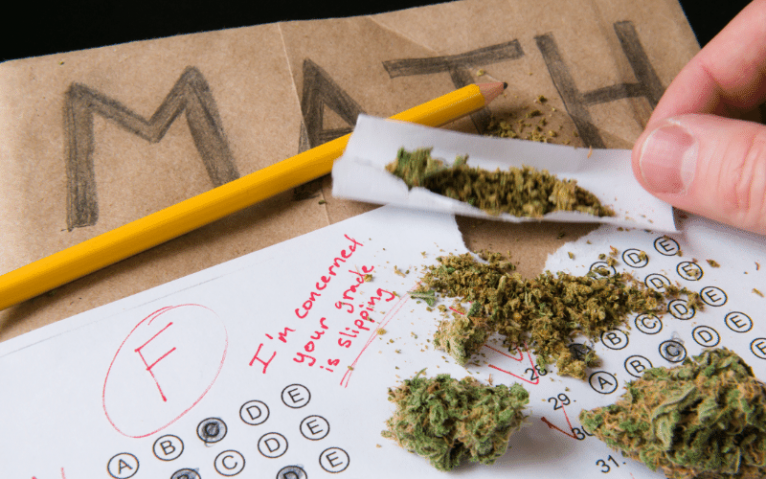With so many states across the United States legalizing marijuana for medical and recreational use, many parents are left wondering if their children are using marijuana. Even though many tout marijuana as a harmless substance, the reality is that marijuana addiction can happen. Let’s explore the signs of marijuana use and how to tell if your child is using marijuana.
Understanding Substance Abuse
Kids try drugs for a myriad of reasons. Peer pressure, to self-medicate mental health conditions, and other reasons. Even when parents set an excellent example that talks about the dangers of drug addiction and alcohol abuse, many kids will try marijuana.
The majority of Americans don’t have any more of a problem with marijuana than they do with alcohol. Some states have even legalized recreational marijuana use. This doesn’t mean marijuana use is risk-free.
However, we’re still learning about the long-term consequences of marijuana use. Some studies point to marijuana and potential medical health disorders in the future, including anxiety, depression, and schizophrenia.
While we still need more research, preliminary studies believe that marijuana can lead to cognitive decline. Damages to the brain are relatively common, especially among teenage marijuana users.
First Signs Your Child is Using Marijuana
One of the most significant pointers of marijuana addiction is the insatiable urge to use marijuana despite adverse consequences. The most common signs of marijuana use include:
- Bloodshot eyes
- Increased appetite
- Lack of motivation
- Weight gain
- Nervous or paranoid behavior
- Impaired coordination
- Slowed reaction time
- Dry mouth
- Dizziness
- Memory impairment
- Lack of motivation
- Anxiety
- Impaired judgment
- Distorted perception
- Relaxed state, sleepiness
- Feeling “high” or euphoria
- Slowed or poor coordination
Of course, you can quickly notice when someone is smoking marijuana. The minutes after someone smokes pot, they’ll feel the first effects of marijuana, and you’ll see them high on marijuana. This means they’re more relaxed, comfortable, and more. As their high goes down, they’ll likely crave junk food and other side effects of weaving off marijuana.
In some cases, they will also experience some side effects such as paranoia, overeating, anxiety, and impaired motor function or impaired cognition. The long-term side effects of marijuana abuse aren’t as damaging as other drugs. However, it still leads to lung infections, reduced ability to learn, memory loss, and inhibited mental development. Not to mention, many believe marijuana acts as a gateway drug that leads to more potent substances, such as cocaine and heroin.
If you notice these signs, it’s an indication that there may be a problem. Being aware of the effects of marijuana can help you detect use, and can also be helpful when confronting a loved one about your concerns. Additionally, early substance abuse may lead to various mental health conditions later in life, such as bipolar disorder.
Evident Signs of Marijuana Use
Many parents worry when they believe they’ve found drugs in their child’s bedroom. Most of the time, their intuition is correct. Drug paraphernalia is a crucial indicator of substance use and abuse.
For marijuana, cocaine paraphernalia can be blunt papers, rolling papers, pipes, bongs, and grinders. Another evident sign is the smell of marijuana that can easily be noticed in their clothes and bedroom.
Marijuana Withdrawal Signs
Once someone develops a physical and mental dependency for marijuana, they’ll experience withdrawal symptoms if they try to quit. However, most marijuana withdrawal symptoms are psychological. People experience signs like irritability, insomnia, cravings, depression, changes in eating patterns, anxiety, and restlessness.
Marijuana symptoms can start within the first 24 hours after the last use. However, these symptoms can extend for up to two weeks or more. On rare occasions, people report post-acute withdrawal symptoms (PAWS) that can last up to 24 months. Some PAWS include restlessness, irritability, agitation, diminished appetite, poor concentration, increased anxiety, difficulty with decision-making skills, decreased ability functioning at the same level as before using marijuana, and cravings.
What Can I Do If My Child is Using Marijuana?
Unfortunately, there’s no quick answer to what to do if your child is using marijuana. It’s a process, and the first step is to learn as much as you can about marijuana and your child’s use.
Some questions you can ask yourself and others include: What are the long-term effects of marijuana? How dangerous is it? Are there associated risks? How much marijuana is your child using? For how long have they used it? Do they want to stop? If so, what type of help is best suited for them?
Reaching a drug treatment center for assistance is an excellent way to seek for yourself and your child. At Lighthouse Recovery Institute, our coordinators can answer all your doubts and help you stage an intervention if you need one to help your child seek treatment.
While marijuana addiction isn’t a life-threatening disease, it can undoubtedly hinder someone’s health and productive life. Seeking help is the first step to walking the path to recovery and achieve long-term success in addiction recovery.
We can help you figure out the best addiction treatment program and healthcare path to help your child get better. Our programs incorporate support groups, family therapy that allows patients to spend time with their family, and more. If you believe your child is using drugs, don’t hesitate to reach out for assistance and guidance today.









